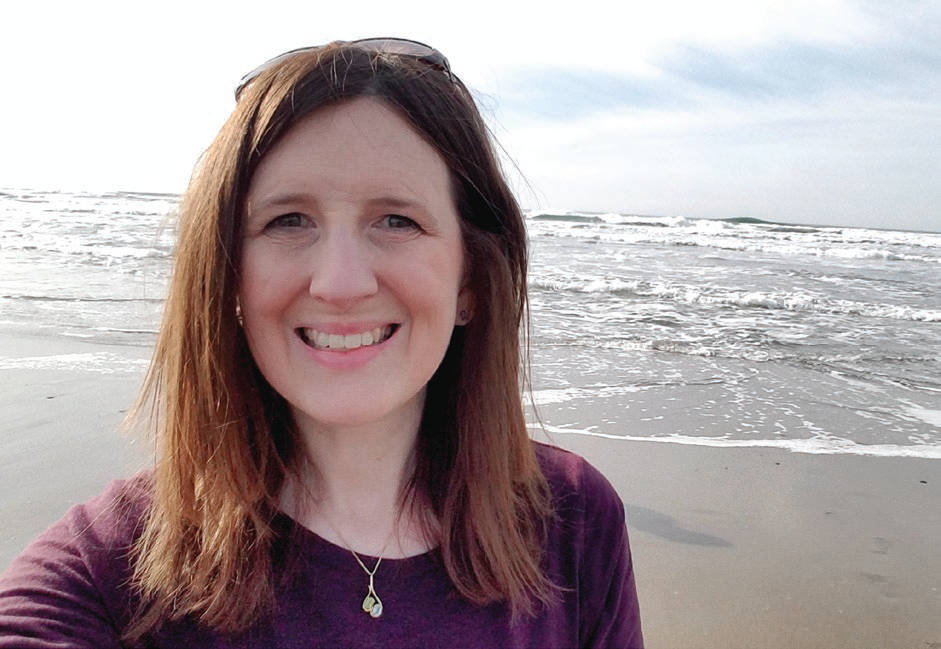
ONE CHILD SHAPING THE FUTURE THROUGH CLINICAL TRIALS
KELLY CARPENTER
I still remember sitting in a presentation on clinical trials for neurofibromatosis Type 1 (NF1) and thinking there is no way I could enroll my child in a clinical trial. Fast forward 3 months and due to significant tumour growth, I was enrolling my 3 year old son in his first clinical trial. The ironic part being that it was with the same doctor who gave the clinical trial presentation. My son Travis (now 11) is currently enrolled in his third clinical trial.
WE WORK AS A TEAM WITH HIS MEDICAL STAFF AND HAVE NEVER FELT LIKE GUINEA PIGS.
NF1 causes tumours to form on nerves anywhere throughout the body. Travis’ tumour extends over half of his body length and doctors classified his tumour as inoperable, making a clinical trial the only option. My husband and I felt compelled to look beyond the typical “wait-and-see” option given to NF1 families. For us, seeking a second opinion for Travis created the path towards clinical trials.
Before each of Travis’ three clinical trials, we obtained a copy of the protocol information, a multi-page document listing what is involved with each clinical trial and the contact information for the Principal Investigator (PI) or lead doctor. The protocol includes important information such as: clinical trial phase, how and when the medication is taken and stored, additional medications to take, medications or foods to avoid, required exams, follow-up frequency, how the team will determine if the medication is effective, and potential side effects. This information can be provided by the clinical trial PI without obligation to enroll. We reviewed this document with the team and our local doctors to discuss our questions.
After weighing the risks and benefits for each clinical trial, we determined the right answer for our family at that time.
Each of the clinical trials brought travel and logistical considerations. The first clinical trial meant traveling 1,000 miles by car, and the second two trials involved flying to the East Coast. In addition to travel expenses, hotels, and testing, we also factored in the time away from family, school, and work. Many great organizations like Miracle Flights, Ronald McDonald House, and the Children’s Inn helped us with travel logistics. Some clinical trials even include assistance to help cover travel costs. We reached out to a social worker at each hospital to help connect us with options for travel resources.
All potential clinical trial participants must complete testing to determine eligibility for the trial before the first dose of medication. Travis’ testing lasted from a day to a week, depending on the clinical trial. The results of these exams ultimately determined his enrollment in the trial. The strain of completing the testing with no guarantee of enrollment brings a complex series of emotions as you want to see your child healthy balanced with the hope for enrollment, i.e. “sick enough” for treatment.
Every clinical trial provides us with journals to document the timing of the trial medication, side effects, illnesses, and other findings. We submit these journals to the clinical trial team on a routine basis. These journals provide the necessary documentation for review by the team, other investigators, the drug manufacturers, and others involved in the clinical trial. We also receive calendars for follow-up appointments and cards with emergency contact information of the study doctors.
The clinical trial team constantly monitors all participants for side effects. These are listed in the documentation and are common to rare in frequency, and mild to severe. However, not all side effects cause harm. In his current clinical trial, Travis’ hair changed from brown to platinum blonde and he LOVES this color change.
During the follow-up appointments, we discuss Travis’ results with his medical team. Each clinical trial brought a different set of results. Travis’ tumor grew too much on the first clinical trial resulting in his removal from the trial and no words describe the devastating feeling when we learned of his removal. The second clinical trial showed slowed tumor growth. At his 3.5 year appointment on his current clinical trial, Travis’ tumor shrank 38%! We are thrilled with this result, and with minimal side effects.
We build in time for fun activities and meeting up with friends while we travel for the clinical trial appointments. The timing of one trip worked out for Travis’ dad and 2 older brothers to join us and we enjoyed exploring Washington D.C. as a family. Another trip brought an opportunity for Travis to attend a NASCAR race and meet drivers and crew members of his favorite teams.
One thing remains consistent throughout all the appointments, discussions, phone calls, and emails, we work as a team with his medical staff and have never felt like guinea pigs. For Travis, participating in clinical trials helps the doctors learn more about his condition as he hopes “no one else has to go through this”. His current clinical trial may lead to the first medication to be approved for the treatment of plexiform neurofibromas in NF1 patients.
For more information about clinical trials, go to clinicaltrials.gov.
Kelly Carpenter, her husband Scott, and their 3 sons (Nolan, Barrett, and Travis) moved to Salt Lake City 8 years ago to be closer to Travis’ medical teams for his NF1 care. Kelly champions the efforts to #EndNF through volunteering with the Children’s Tumor Foundation; weekly at the NF Clinic in Utah and helps coordinate Utah NF Symposium. Kelly and family are actively involved in sports, especially racing and hockey in addition to managing Travis’ medical appointments and care. Kelly earned her Meteorology degree at Texas A&M University and proceeded to earn a Masters Degree in Atmospheric Science at Colorado State University with an emphasis in tropical meteorology and satellite imagery. Kelly currently works at the Children and Young Family Ministries Coordinator at Christ United Methodist Church in Salt Lake City, UT.

